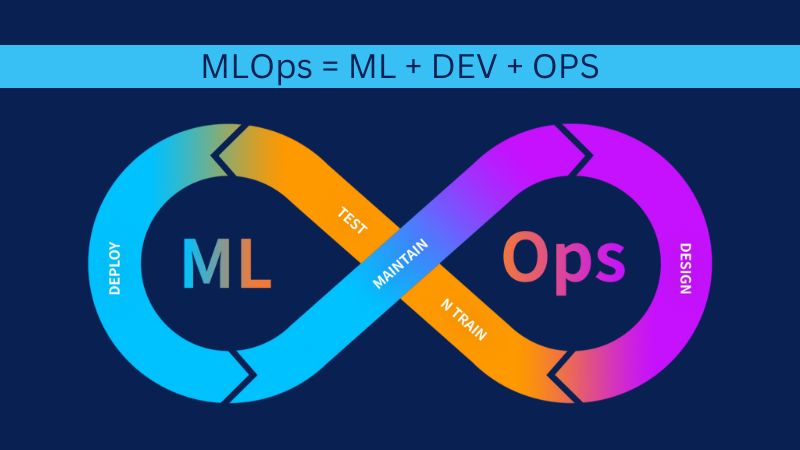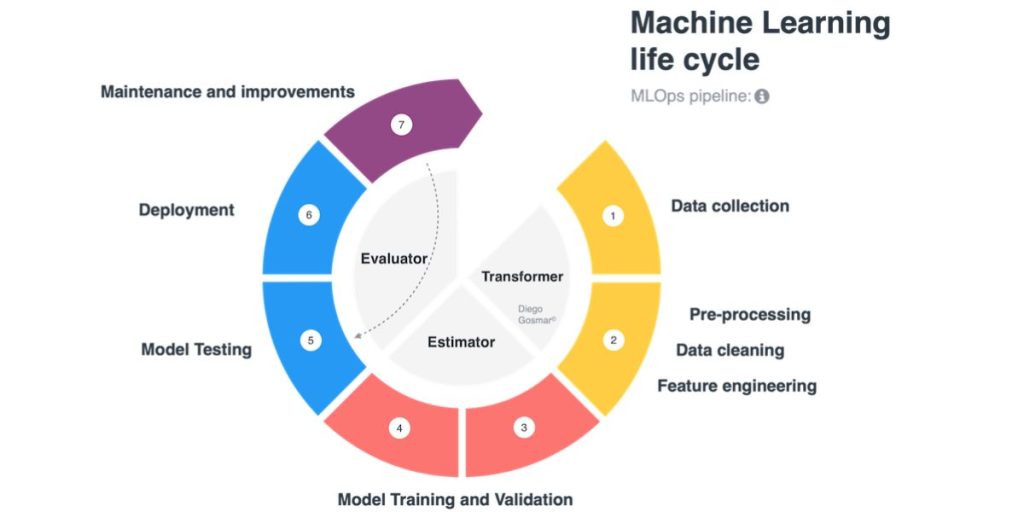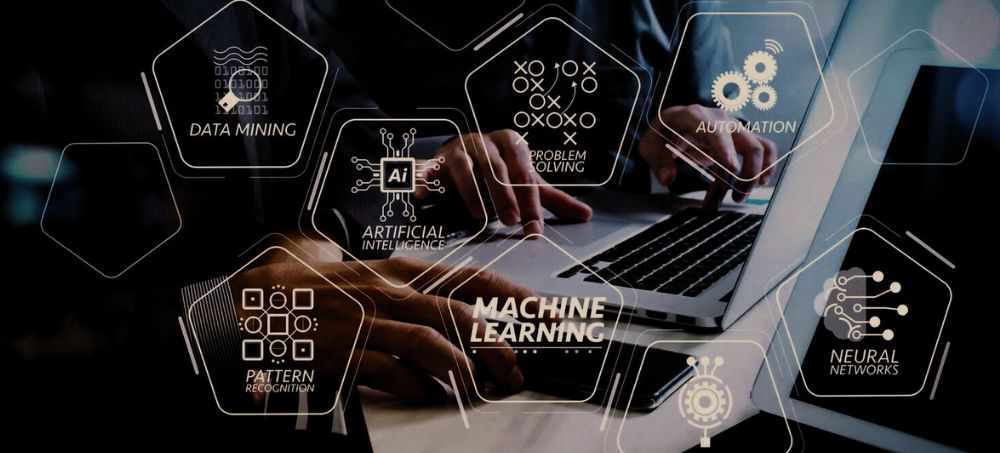A transformative field known as MLOps has emerged from the intersection of machine learning (ML) and operations (Ops) in the rapidly developing field of artificial intelligence. This upheaval is reshaping how associations assemble, send, and oversee AI models at scale. How about we dig into the complexities of the MLOps worldview and its significant effect on the field of data science?
The Beginning of MLOps

The MLOp’s surprise emerged as a response to the challenges introduced by the ordinary model improvement life cycle. In the standard machine learning development services technique, manufacturing an artificial intelligence model was much of the time limited to the space of data scientists, with sending and operationalization left to an alternate gathering. MLOps attempts to beat this issue by empowering collaboration between data specialists, and designers, and undertaking gatherings.
What Is a Machine Learning Lifecycle?
The Machine Learning Life cycle (MLOp) is a precise cycle that envelops different stages in the turn of events and organization of AI models. MLOps is a cooperative methodology that consolidates standards from Machine Learning (ML), software development (Dev), and IT Operations (Ops). It centers on smoothing out and automating the start-to-finish cycle of conveying, making due, and checking AI model’s underway conditions. MLOps aims to create a workflow that is both smooth and effective for deploying and maintaining machine learning development services models at scale by bridging the gap between data science and IT operations.
Here is a breakdown of the critical parts of MLOps:
Machine Learning (ML):
Includes the turn of events, preparation, and enhancement of AI models utilizing information. This is the center space of data researchers and engineers.
Dev (Development ):
It unboxes the practices and apparatuses utilized in programming development. Version control, code collaboration, and the incorporation of machine learning development services code into a broader software development framework are all part of MLOps.
Operations (Ops)
Alludes to the IT operations and infrastructure MLOps and incorporates errands like model organization, checking, scaling, and keeping up with the well-being of machine learning frameworks underway.
Key Pieces of MLOps – Establishing the Framework for Progress Through Collaborative Development:

MLOps empowers cooperation through form control frameworks, empowering numerous partners to work consistently on the model of events.
Nonstop Mix/Constant Organization (CI/Album)
Mechanized CI/Disc pipelines guarantee smooth progress from model improvement to sending, diminishing manual mistakes and speeding up the organization cycle.
Control and Management of the Model
The continuous monitoring of deployed models, the tracking of performance metrics, and the assurance that models function appropriately in real-world situations are the primary focuses of MLOps.
Administration and Consistence
Powerful administration systems are fundamental to guaranteeing consistency with administrative norms, moral contemplation, and data security requirements.
Staying Away From Dark Openings in MLOps Execution
Foundation Intricacy: Scaling with Accuracy
Scaling AI models to meet developing business needs frequently prompts expanded foundational intricacy. The need for rapid scalability, shifting workloads, and the dynamic nature of model deployment all present challenges for businesses. Putting resources into versatile and adaptable cloud-based arrangements becomes basic to addressing these difficulties. Cloud stages offer flexibility, permitting associations to progressively allot assets based on computational requests. Notwithstanding, machine learning development services exploring the horde choices and arranging an ideal foundation arrangement requires cautious preparation and skill.
Security Concerns: Protecting the man-made intelligence Posts
The complexities of MLOps deliver huge security concerns, especially while managing delicate information and conveying models in true applications. Safeguarding the classification, trustworthiness, and accessibility of information is vital. Vigorous security conventions should be set up to invigorate simulated intelligence forts against likely dangers, guaranteeing that models, calculations, and the basic foundation stay safeguarded. Encryption, access controls, and ordinary security reviews become fundamental parts of MLOps work, imparting trust in partners and encouraging a safe AI biological system.
Range of abilities Expansion: Connecting the Information Activities Inlet
The effective execution of MLOps requires a union of ranges of abilities customarily connected with information science and tasks. Information researchers, who succeed in creating and refining AI models, need to team up consistently with activities experts, who acquire mastery frameworks from the executives and organization. Overcoming this issue requires upskilling existing groups or employing experts with a half-and-half range of abilities. Associations should cultivate a culture of cross-useful coordinated effort, empowering colleagues to grasp both the complexities of information science and the subtleties of functional contemplations. For the successful machine learning development services implementation of MLOps practices, making investments in training programs and hiring practices that encourage this diversity of skill sets becomes crucial.
In tending to these difficulties and contemplation, associations can brace their MLOps techniques, guaranteeing the smooth coordination of AI into functional work processes while protecting against likely entanglements. This proactive methodology makes way for saddling the maximum capacity of MLOps and driving development in the quickly advancing scene of AI tasks.
Java programming well suited for the creation of ML and AI systems
Knowledge of artificial intelligence (AI) and machine learning is a crucial ability to have, regardless of the programming language you use, whether it Java or JavaScript.
The Future Trend of MLOps
MLOps will become increasingly important in shaping the development of AI in the future as machine learning continues to permeate various industries. Automizing, joint effort, and readiness will stay at the very front as associations endeavour to tackle the maximum capacity of AI in their tasks.
Several significant trends and developments are likely to influence the course of AI operations in the future as the MLOps landscape continues to change.
Future Frontiers of MLOps: Unveiling Exciting Trends and Ideal Models
1. Independent MLOps Stages
What’s to come holds the commitment of independent MLOps stages that influence progressed artificial intelligence capacities for self-improvement, self-mending, and insightful dynamics all through the whole AI life cycle. These stages will altogether lessen manual mediation, smooth out work processes, and upgrade the general effectiveness of simulated intelligence activities.
2. Remarkable Development in Model Sending
As associations progressively perceive the essential worth of AI models, the fate of MLOps will observe an outstanding development in the quantity of sent models. This flood in sending will require a versatile foundation, strong administration systems, and productive observing practices to guarantee the consistent working of assorted models across different spaces.
4. Joining of DevSecOps Standards
Security and consistency will become fundamental contemplation later on the MLOps scene. A mix of DevSecOps standards will guarantee that safety efforts are imbued into the whole ML life cycle. This proactive methodology will address expected weaknesses, safeguard touchy information, and maintain moral norms, cultivating trust in artificial intelligence frameworks.
5. Improvements in Model Monitoring and Explain-ability
In the not-too-distant future, model monitoring will improve to offer more in-depth insights into the behaviour of models. This will make it possible to proactive identify anomalies and performance degradation. The logic of AI models will likewise become the dominant focal point, guaranteeing that partners can appreciate and believe the choices made by complex AI frameworks. These headways will be critical for administrative consistency and building client certainty.
6. Cross-Useful Joint effort and Range of abilities intermingling
The fate of MLOps will observe an expanded accentuation on cross-useful joint effort and range of abilities assembly. Experts with skills in data science, tasks, and space-explicit data will work together consistently, separating conventional storehouses. This cooperative methodology machine learning development services will drive advancement, speed up model turn of events, and work with more powerful critical thinking.
7. Ecological Maintainability in Artificial Intelligence Tasks
Feasible artificial intelligence practices will acquire conspicuousness in MLOps, driven by the developing familiarity with the natural effect of enormous scope model preparation. Future MLOps systems will focus on energy-productive model structures, mindful information use, and Eco-accommodating registering framework, adding to a more feasible and moral simulated intelligence environment.
Conclusion:
All in all, the MLOps upheaval addresses a change in perspective in the manner AI models are created, sent, and made due. Organizations can navigate the difficulties of scaling machine learning by adopting MLOps practices, opening up new possibilities and driving innovation at scale.



